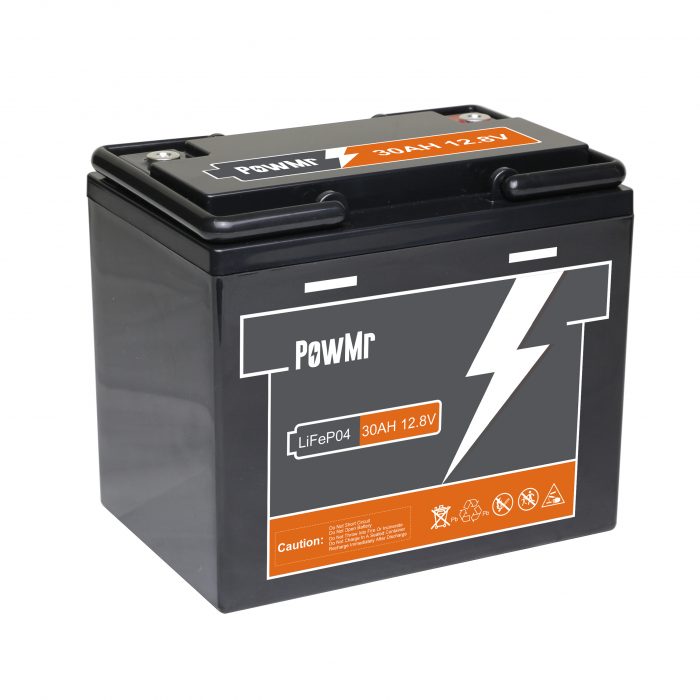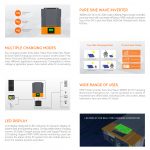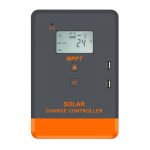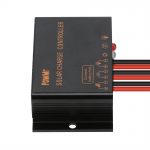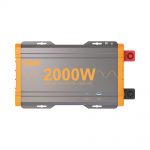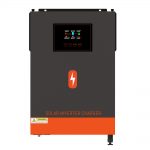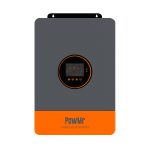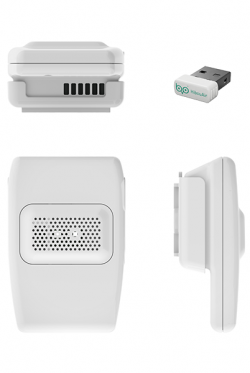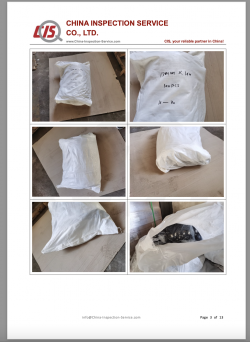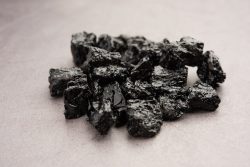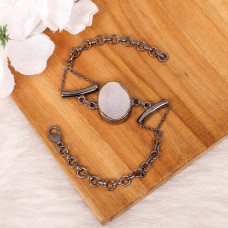to choose the right ampere controller
Powmr is committed to innovating to perfection and ensuring that consumers around the world fully benefit. One such product from Powmr is the UPS, which has been crafted with all safety specs, aesthetic appeal, longevity and productivity in mind. As we read further, we’ll also learn about its other add-ons, tech specs, and just as important calculations that play a huge role in making this product one of a kind. Methods for sizing charge controllers. Solar charge controllers are specified by voltage and amperage.
You will need a suitable solar controller to support the voltage of your solar panel array and then output to the voltage of the battery pack. You also need to make sure your solar charge controller has enough capacity to handle the current from the solar panel array. You have to divide the wattage of the solar panel by the voltage of the battery pack to get a rough estimate of how many amps the controller needs. Change the location of the inverter, antenna cable and TV power cord. Isolate the TV, its power cord, and antenna cables from the 12-volt power source by connecting an extension cord from the inverter to the TV.
Make sure any excess AC power cords are kept away from the TV. Coil the TV power cord and the input cable from the 12 volt supply to the inverter. To provide backup power for multi-story buildings, commercial establishments and industrial facilities with higher power requirements, Powmr offers the broadest range of three-phase inverters with load handling capacities from 5KVA to 100KVA. Powmr has always been the first choice for customers such as offices, showrooms, shopping malls, hospitals, elevators, hotels, schools, laboratories, gas stations, banks, telecom towers, ATMs and BPOs and other commercial locations.
Some appliances, such as motors and microwave ovens, can only produce full output with sine wave power. Some appliances, such as toasters, dimmers, and some battery chargers, require a sine wave to work. Sine wave Hybrid Inverter are always more expensive – from 2 to 3 times. The modified sine wave inverter actually has a waveform more like a square wave, but with an extra step size or so. AC drives can handle frequent starts and stops. After changing the rotation command, only a small current is needed to change the rotation direction.
The stand mixer can produce the correct output as the direction of rotation, and the number of revolutions can be controlled by a variable frequency drive. The AC drive is pre-programmed. Control power, communication lines, and motor leads for auxiliary equipment are wired at the factory. Optimized charge and discharge management greatly improves battery life. At the same time, the large LCD screen contains more content, the charts are more beautiful and easy to understand, and the simplified display management shows the working status and parameters of the system to the greatest extent. Smart backlight control for clear viewing even in dimly lit environments.
Various control parameters can be set to meet various application requirements. When the lithium battery voltage is 0 (zero) V, the WP5048D supports lead-acid battery and lithium battery charging can also work from solar panels. Pros: It’s more efficient and reliable because it mostly stays closed. Since it’s mostly off, the operating temperature is lower, thus requiring a smaller heatsink. It’s cheaper than an online UPS. The geometry of the positive plate is tubular, which retains the active chemical components in the inverter cell with additional support. These plates have a tubular support structure around the reactive chemical, which ensures that the receiving element remains in place.
Which is better, PWM or MPPT? Without a doubt, you should choose an MPPT controller instead of a PWM controller. The conversion efficiency of the MPPT Solar Charge Controller is 150% of the PWM. Better quality, better conversion efficiency, better protection of your system and battery, in the long run, the use of MPPT is also a trend, MPPT is more worth implementing. powmr experts have prepared a comprehensive comparison guide. When choosing an MPPT solar charge controller, you must ensure the following basic features: voltage and current regulation, pulse width modulation or PWM control, current compensation and load disconnect, temperature compensation, and automatic load reconnection.
Air conditioners are sensitive appliances and require efficient voltage regulators to perfectly regulate the voltage output. Our range ensures the safe operation of the air conditioner in your home through its efficiency combined with the latest technology. As long as the voltage is below these values, it is easy to find a suitable MPPT controller. If there are special requirements, it is also easy to find solar charge controller manufacturers to order if these input voltages are higher than the rated value.
Just released a sizing calculator to choose the right ampere controller. Check here. Charge voltage difference. When using MPPT solar controller to charge low voltage battery through high voltage solar panel, under the same conditions, the charging efficiency will be very different from PWM charge controller. If the solar panel and the battery are at the same voltage, say 12V, then the actual PWM and MPPT controllers won’t be much different.
